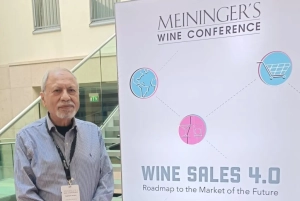Posted: Thursday, 24 Oct 2024 22:50
Personality of GAJA wines-Winemaker or Territory
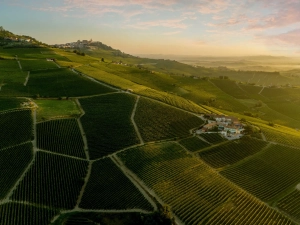
The identity of a wine is the balance between man and nature: their interaction establishes a wine’s uniqueness, one which cannot be replicated in other circumstances. Gaia Gaja, the eldest of the three Gaja siblings- Gaia, Rossana and Giovanni, says, ‘great wine, must be authentic and must reflect its place of origin. Barbaresco and Barolo, for instance, are known for their strong identity. This is due to three strengths of the area:
1. The first is the geology- the immense varieties of vineyard exposures, altitude, hill slopes, valley shapes, distances from rivers, microclimates etc. All of this makes up the mosaic that is unique in the world. This exclusive complexity and diversity reflects in the wine within the glass.
2. The second point concerns the local grape, Nebbiolo. It is a variety capable of accurately expressing the infinitesimal nuances of its territory of origin. It doesn’t dominate the terroir, but is dominated by it. Nebbiolo has been cultivated in this area since time immemorial and has adapted well by reproducing into hundreds of different biotypes, the multitudes of which represent the fullest expression of Nebbiolo.
Also Read : Angelo Gaja: Driving Italian Wines was not easy
3. The third factor is the role of a farming culture. The Langhe community is founded on strong and historical collective know-how, affirming how man and nature are two sides of the same coin that gives its wine unique characteristics.
Of course, some vineyards have a stronger identity than others and give a more pronounced identity to the wine. They are special vineyards; natural elements intersect in these places and complement each other perfectly.’
Also Read : Gaia Gaja: Dynamics of a Family Business in an Iconic Italian Winemaker
Specific Territorial identity
How can a producer ensure a wine’s specific territorial identity? The younger sister Rossana Gaja feels that their goal is very simple-to harvest the healthiest grapes that are as perfectly ripe as possible because this will express the vineyard’s identity the best. ‘The producer is merely like a tailor whose talent lies in knowing how to cut and shape the dress (agronomic and cellar practices) according to the body (the vineyard) and the occasion (the vintage)’, according to her.
‘In the best of cases, our choices, based on observation and our historical memory, are an integral part of the terroir as they are attuned to bring out the vineyard’s original character. The symbiotic man-nature relationship relies on the played-down role of the winemaker. The vineyards merely express the differences that distinguish them from each other; our viticulture and winemaking practices are merely a tool, calibrated to fit and calibrated to suit, in the metaphor of the tailor. This concept applies not only to the Langhe, but also to other wine producing areas, ’she says.
Also Read : The World of Gaja: Sperss in Serralunga turns 30
Territory of Montalcino
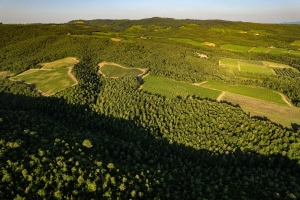
The youngest sibling Giovanni Gaja shares his perspective about Montalcino in Tuscany where GAA has been producing the coveted Rennina and Sugarillo single vineyard Brunello di Montalcino for almost 30 years at their winery Pieve Santa Restituta. He says ‘grape varieties and the culture of a place make the difference. For example, in Montalcino the wines have a distinct character and identity due to nature’s role.’
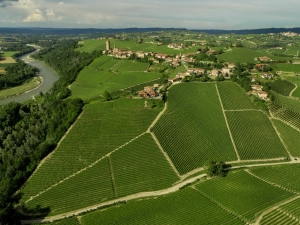
‘The area has quite a complex geology and the Sangiovese grape (known as Brunello here), has the ability to convey the character of the territory with precision and clarity like Nebbiolo. But unlike in Piedmont, where the single vineyard wines like Sori san Lorenzo (Barbaresco) and Sperss (their iconic vineyard in Serralunga in Barolo) have historically ruled as the top wines, Montalcino is still a relatively young wine producing area and needs time to mature, although the new generation here now understands the importance of individual vineyards and singular zones within the denomination,’ he adds.
Also Read : Wine Club Dinner: Top Wines from Gaja Impress
Bolgheri wine region in Western Italy
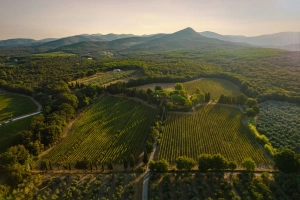
Bolgheri is on the West Coast in Italy and produces mainly Bordeaux varieties like Cabernet Sauvignon and Merlot, where GAJA owns Ca’Marcanda winery for 30 years and is the first Gaja winery to be visited by Arora in 2003. The grapes here typically have a marked character and recognizable profiles. The concept of typicality refers to the grape variety and not to be confused with terroir whichcan modify the typical profile of a grape variety making the wine unique and distinctive of the specific area.
In Bolgheri their goal is to ensure the full expression of its particular geological and pedoclimatic (A microclimate within soil that integrates the combined effects of its temperature, water content and aeration) distinctiveness. Here, the history of wine production is quite recent and the individual interpretation of the producer is more important; the winemaker’s hand is more central and takes on greater importance, according to their oenologist Alessandro Albarello.
Also Read : Star Interview : La Casa Nostra of Angelo Gaja
Climate change
While talking of the dynamics between man and nature in the world of wine it is important to talk of climate change. With the climate now constantly changing, the eye and hand of man will have an increasingly central role, feels Angelo Gaja. Knowing how to adapt to change will be essential in the continuation of safeguarding one’s vineyards. Knowing how to evaluate and determine new vineyard exposures and altitudes along with the ability to adapt by pursuing new paths will be crucial.
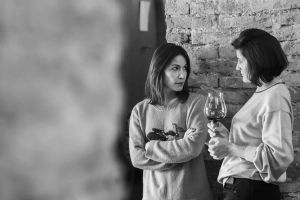
In essence, according to the expert family members of the iconic GAJA, the dialogue between man and nature has always existed and is extremely important for it to continue. The difference is that the climate has not undergone substantial changes for centuries and man has had time to understand and adapt to them. Today presents new challenges as these shifts are becoming so rapid. They require winemakers to be ready, attentive, and quick to read the signs of change and to evolve accordingly, according to GAJA.
Incidentally, Gaia, Rossana and Giovanni Gaja are the 3 partners with equal shares as a part of succession planning by Angelo who has reportedly kept only 1% shares for him and his wife and has taken a bit of back seat and is a Statesman, involving himself in planning for future- like partnering with Graci in making IDDA Etna wines in Sicily and building another winery in Alta Langa-close to their first winery in Barbaresco for white wines that Arora visited last year.
Subhash Arora




